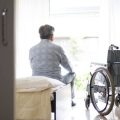Understanding Communication Challenges After Stroke
After a stroke, many adults in the United States experience communication difficulties that can affect every part of daily life. These challenges may include trouble speaking, understanding language, reading, or writing. Understanding these issues is the first step to finding helpful solutions through speech therapy.
Main Types of Communication Difficulties
There are several common types of communication problems adults might face after a stroke:
| Type | Description | How It Affects Daily Life |
|---|---|---|
| Aphasia | Trouble understanding or producing spoken or written language | Difficulty joining conversations, following instructions, or expressing needs |
| Dysarthria | Weakness in the muscles used for speech | Slurred or slow speech that’s hard for others to understand |
| Apraxia of Speech | Trouble planning and coordinating the movements needed for speech | Saying words incorrectly or out of order, making it hard to communicate thoughts clearly |
Aphasia: More Than Just “Trouble Talking”
Aphasia is especially common after a stroke and can range from mild word-finding problems to major loss of language ability. In everyday situations—like ordering food at a restaurant or talking on the phone—aphasia can make things frustrating and isolating.
Dysarthria: When Speech Sounds Slurred
Dysarthria happens when the muscles used for talking are weak or difficult to control. Adults with dysarthria may sound like they have a “thick tongue” or slur their words, which can lead to misunderstandings at work, home, or in social settings.
Apraxia of Speech: Words Come Out Wrong
With apraxia of speech, people know what they want to say but struggle to move their mouth correctly. This can make simple conversations take much longer and cause frustration on both sides.
The Impact on Daily Life in the U.S.
Communication challenges after stroke can affect everything from chatting with friends to handling healthcare needs. In American culture—where independence and self-advocacy are valued—being able to communicate is key for getting back to work, managing family roles, and enjoying hobbies. Understanding these obstacles helps guide the best approach for speech therapy and support.
2. Role of Speech-Language Pathologists
Who Are Speech-Language Pathologists (SLPs)?
Speech-language pathologists, often called SLPs or speech therapists, are healthcare professionals who specialize in communication and swallowing disorders. In the United States, SLPs hold advanced degrees and state licenses, and many are certified by the American Speech-Language-Hearing Association (ASHA). Their role is crucial for adults recovering from a stroke, as they help people regain their ability to speak, understand language, read, write, and even swallow safely.
The Evaluation Process After Stroke
After a stroke, an SLP will conduct a thorough evaluation to understand the specific communication challenges you face. This evaluation might include:
| Area Assessed | What It Means | How Its Checked |
|---|---|---|
| Speaking (Expressive Language) | Your ability to express thoughts, needs, and ideas | Pictures naming, answering questions |
| Understanding (Receptive Language) | Your ability to understand spoken or written words | Following directions, answering yes/no questions |
| Cognitive-Communication Skills | Memory, attention, problem-solving linked to communication | Simple memory tasks or conversation activities |
| Swallowing Function | Your safety when eating or drinking | Observation during meals or special swallowing tests |
| Reading & Writing Skills | Your ability to read and write messages or information | Reading simple passages or writing names and words |
How SLPs Create Individualized Therapy Plans
No two stroke survivors are exactly alike. SLPs design therapy plans tailored to each person’s unique strengths and needs. Here’s how they do it:
- Personal Goals: The SLP will talk with you and your family about what’s most important—maybe it’s making phone calls again or ordering food at a restaurant.
- Therapy Techniques: Depending on your challenges, therapy might focus on exercises for speaking more clearly, understanding conversations, reading emails, or even using technology like speech apps.
- Cultural Sensitivity: SLPs in the U.S. respect your background and preferences. They can adjust materials and approaches so they fit your daily life and community.
- Family Education: Your loved ones can learn ways to support communication at home through simple strategies suggested by the SLP.
- Progress Tracking: Regular check-ins help measure improvement and update your therapy plan as you recover.
Example: Customized Therapy Approaches for Adults After Stroke
| Main Challenge | Therapy Focus Example | Everyday Goal |
|---|---|---|
| Trouble Finding Words (Aphasia) | Name objects in pictures; practice common phrases | Saying family members’ names easily again |
| Slurred Speech (Dysarthria) | Mouth exercises; practice slow speech with feedback tools | Clearly ordering coffee at a café |
| Trouble Following Conversation (Cognitive Issues) | Attention-building games; memory aids like calendars or notes | Remembering appointments or joining group talks at church or clubs |
| Trouble Swallowing (Dysphagia) | Safely practicing swallowing different foods/liquids; posture tips during meals | Eating safely with friends and family without choking risk |
| Trouble Writing or Reading (Alexia/Agraphia) | Practicing writing grocery lists; reading short texts aloud together | Emailing friends or making shopping lists independently again |
![]()
3. Evidence-Based Speech Therapy Techniques
After a stroke, many adults in the United States face communication challenges that can affect their daily lives. Thankfully, speech therapy offers a variety of research-backed methods to help improve speaking, understanding, and social interactions. Here are some popular and effective techniques used by speech-language pathologists (SLPs) across the country.
Constraint-Induced Language Therapy (CILT)
CILT is inspired by physical therapy principles. In this method, people are encouraged to use their spoken language as much as possible, even if its difficult at first. Non-verbal ways of communicating (like gestures or writing) are limited during therapy sessions, which pushes the brain to “re-learn” speech and language skills. This method is often done in small groups or one-on-one settings.
How CILT Works
| What Happens | Purpose | Who Benefits |
|---|---|---|
| Speaking only, no gestures or writing | Encourages verbal expression | Adults with mild to moderate aphasia |
| Intensive practice with real-life topics | Improves everyday conversation skills | Stroke survivors needing more speech practice |
Melodic Intonation Therapy (MIT)
This technique uses melody and rhythm to help people say words and phrases. Many stroke survivors find it easier to sing than speak because singing uses different parts of the brain. MIT is especially helpful for those who have non-fluent aphasia, meaning they know what they want to say but have trouble getting the words out.
Key Features of MIT
- Uses simple tunes and natural speech rhythms
- Focuses on common words and everyday phrases
- Progresses from singing to speaking over time
Augmentative and Alternative Communication (AAC) Devices
If speaking is very difficult, AAC devices can provide another way to communicate. These tools range from simple picture boards to high-tech speech-generating devices or apps on tablets and smartphones.
Types of AAC Devices Used in the U.S.
| AAC Device Type | Description | Example Use |
|---|---|---|
| Picture Boards | User points to images or symbols to express needs | Selecting food choices at mealtimes |
| Speech-Generating Devices (SGDs) | Electronic devices that “speak” messages typed or selected by the user | Telling family members about pain or discomfort |
| Apps for Tablets/Phones | Mobile technology with customizable vocabulary and voices | Ordering coffee at a café using a tablet app |
The Role of Speech-Language Pathologists (SLPs)
No matter which technique is used, SLPs will tailor therapy plans based on individual goals and needs. They work closely with adults and their families, making sure each person finds the best strategies for improving communication after a stroke. These evidence-based therapies have helped thousands of Americans regain their voices and confidence every year.
4. Incorporating Family and Community Support
Why Family Involvement Matters
When an adult experiences a stroke, their recovery journey is not just about therapy sessions and exercises—family support plays a big role. Family members help create a positive environment for practicing communication skills learned in speech therapy. Their encouragement and understanding can boost confidence and reduce frustration for the person recovering from a stroke.
Caregiver Training: Tools for Everyday Communication
Caregivers often become key partners in the rehabilitation process. With the right training, they learn how to use helpful strategies at home, such as:
| Strategy | Description |
|---|---|
| Active Listening | Giving extra time for responses, showing patience, and using body language to show understanding. |
| Using Visual Aids | Pointing to pictures or written words to support spoken messages. |
| Simplifying Language | Breaking down sentences into smaller, easier-to-understand chunks. |
| Routine Practice | Setting aside daily time for communication activities recommended by the speech therapist. |
Community Resources: Support Beyond the Home
Local resources can offer valuable support for stroke survivors and their families. In the United States, many communities have organizations or centers that provide:
- Support Groups: These groups connect people facing similar challenges. Sharing experiences helps reduce feelings of isolation and offers emotional support.
- Rehabilitation Services: Local hospitals or outpatient clinics often have specialized programs for adults after stroke. They may include speech therapy, occupational therapy, or group classes.
- Educational Workshops: Workshops teach both survivors and caregivers about new communication tools and practical tips for daily life.
- Online Forums and Teletherapy: For those unable to travel, virtual support options are available. Many speech therapists offer telehealth appointments across the U.S.
Finding Support Near You
If you’re looking for resources in your area, consider reaching out to organizations like the American Stroke Association or local hospital networks. They can help you find both in-person and virtual services tailored to your needs.
5. Building Confidence for Real-World Communication
Why Confidence Matters After a Stroke
Many stroke survivors feel nervous or unsure about speaking in public or joining conversations at work, with friends, or in the community. Building confidence is key to improving communication and feeling more comfortable in everyday American life.
Strategies for Social Situations
Practice makes progress! Here are some ways to rebuild communication skills in social settings:
| Situation | Tips for Success |
|---|---|
| Meeting new people | Practice introducing yourself; use simple phrases; prepare basic answers about your stroke journey if you feel comfortable sharing. |
| Group conversations | Focus on listening; join in by nodding or smiling; add short comments when ready; ask someone to repeat if you miss something. |
| Ordering food or drinks | Practice common phrases at home; write down your order to show staff if needed; choose quieter times to visit restaurants. |
Navigating Work and Community Settings
Returning to work or volunteering can be challenging but rewarding. Try these approaches:
- Prepare key phrases: Write down important words or sentences you might need.
- Use technology: Apps and smartphones can help you communicate or clarify your message.
- Advocate for yourself: Let colleagues know what helps you communicate best (like extra time or written instructions).
Understanding American Cultural Norms
- Small talk: Americans often start conversations with topics like weather, sports, or weekend plans. Practice simple responses for these situations.
- Eye contact: Making eye contact shows you’re engaged, but it’s okay to look away if you need to concentrate on your words.
- Pace of conversation: It’s normal to ask someone to slow down or repeat themselves. Phrases like “Could you please say that again?” are polite and useful.
Everyday Scenarios and Solutions
| Scenario | Solution |
|---|---|
| Talking on the phone | Use speakerphone so both hands are free; write notes before calling; ask callers to speak slowly. |
| Shopping | Create a shopping list with pictures or words; point to items if speech is difficult; ask store staff for help when needed. |
| Community events | Attend with a friend or family member at first; practice introducing yourself; join groups with shared interests for easier conversation starters. |
The right strategies can make everyday communication less stressful and more enjoyable, helping stroke survivors feel included and empowered as they rebuild their skills in all areas of life.


